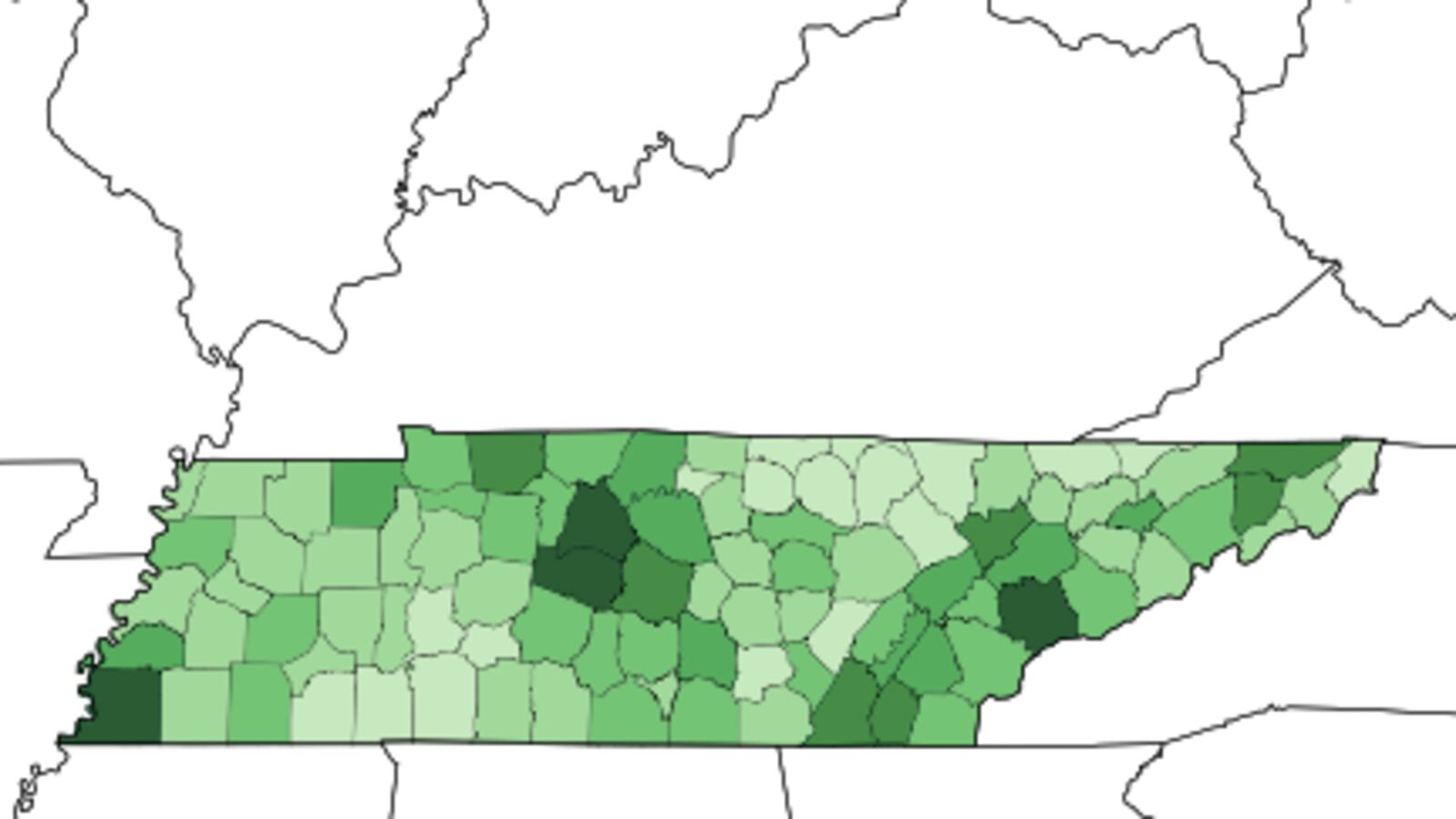For the eighth consecutive year, a committee charged with reviewing Tennessee’s public education funding recommended that the legislature address the widening disparity between teacher salaries across the state.
The recommendations of the Basic Education Program review committee were presented to the State Board of Education at its meeting last week. Funding from the state is determined by the Basic Education Program, or BEP, which undergoes an annual review by a committee of education officials from across Tennessee.
At the high end, in Shelby County Schools, teachers were paid a weighted average of $56,181 in 2013-14, while at the low end, in rural Grundy County, teachers were paid a weighted average of $39,607, according to a report by Brad Davis, the fiscal consultant for the Department of Education.
Scroll over a county to see how much teachers make in each district.
The gap in salaries from district to district has been litigated frequently in the last 30 years, with the Supreme Court of Tennessee deciding in 1993, 1995, and 2002 that the state was shirking its constitutional duty to provide equitable education funding.
The 2002 court decision prompted an overhaul to the funding formula in 2007. The so-called “BEP 2.0” temporarily helped narrow the gap between the highest and lowest-paid teachers in the state from 45 percent to 35 percent.
The gap shrank because the legislature voted to change the formula so school systems weren’t awarded state funds for teacher salaries solely based on teachers’ average number of years of experience and education attained. Legislators adjusted the formula to give a larger share of state money to districts with lower revenues from sales and property taxes. These districts lacked money to pay competitive salaries to teachers, which, under the old formula, meant they received lower disbursements of state education funds, perpetuating a vicious cycle.
But since then, the gap has crept back up to 42 percent, close to its original size, because state subsidies can’t keep up with growing disparities in local funding bases.
Disparity in educator pay is especially intractable in Tennessee because it is one of the few Southern states where most school funding comes from the local level, not the state, said Jim Wrye, a lobbyist for the Tennessee Education Association and a member of the review committee. In Tennessee, 45 percent of education funding is local and 16 percent is federal. Only 39 percent of education funds come from the state.
BEP “just doesn’t cut it,” Wrye said, because with the current formula, districts still need to primarily on local funds raised through sales and property taxes, perpetuating the gap between the haves and have-nots.
“Counties like Williamson County have malls, high property values, all these means to generate money, and Hancock County, they don’t even have a Wal-Mart. They have no way to generate that tax revenue,” he said.
“Teachers are going to end up in poverty in the least resourced districts.”
Recommendations from the BEP review committee to change the formula to address the gap have gone repeatedly unheeded by the legislature, which must vote on changes to the formula.
Teacher pay as a whole has gone untouched while all other areas of education have been reformed in the past five years, from teacher evaluations to standards. With an average salary $44,024 a year, Tennessee ranks 40th in the nation for teacher pay.
Last year, Gov. Bill Haslam promised to increase teacher salaries at a faster rate than any other state in the country, but then reneged, citing budget woes.
The BEP Review Committee also recommended that the state lighten local districts’ financial burdens by changing the formula to pay for 12 months of insurance premiums for teachers, rather than just ten. As it stands, districts have had to fund the extra two months of health insurance for teachers with local funds.

